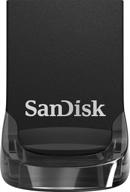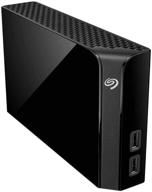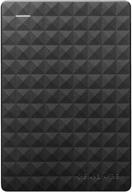
Review on Transcend JetFlash Flash Drive TS16GJF790K by Adam Czajkowski ᠌

It's not all bad, an average quality purchase.
1) The flash drive will always pause recording or erasing when you are writing or deleting, and the pauses can be anywhere from 2 to 10 seconds. Because of this, there was a surge in speed. Budget solid-state drives (SSDs) with TRIM disabled only perform this action after the Over Provisioning and SLC cache areas have been depleted, and only after the full space has been filled, as well as here immediately and under any circumstance. At the same time, the cost of the "128" version is the same as the cost of the SSD for 120. 2) The average read and write speeds for the "32Gb" version on a flash drive that already has FAT32 pre-installed, taking into account any stops: Read Speed at USB 2.0: 37 MB/s The write speed of USB 2.0 is 14Mbps. Recording speed for USB 2.0 small data is 13 files per second. USB 2.0 tiny file deletion: 35 files/sec Read Speed of USB 3.0: 130 MB/s The write speed of USB 3.0 is 18Mbps. USB 3.0 recording of tiny files at a rate of 21 files per second USB 3.0 tiny file deletion: 50 files/sec Reading from small files can be done very quickly (more than a thousand files per second). It doesn't take long to delete huge files. 4) Total: Both flash drives are being used. 4-5 times faster than the flash disks used in the previous generation. Not everyone can have access to the body. The "128GB" version has a price comparable to that of an affordable SSD, but its performance is substantially worse. In my opinion, the quality of the "128" version is lower than that of an SSD with the same capacity that costs around the same amount of money. However, despite the fact that it is quicker than low-cost flash drives from the generation before this one, it did not meet my expectations. My relatives merely wanted a flash drive, so I gave it to them. I can't comment on how well it will perform for their purposes, but I do believe it will be an improvement over the last drive that broke. But it did not live up to my expectations that it could be utilized as a bootable operating system with Ubuntu Linux. Because Ubuntu performs several write operations even when reading, it took almost 5 minutes for the operating system to start from the flash drive. In comparison, booting from an SSD took less than 15 seconds, and booting from an HDD took approximately 1 minute. A flash drive is perfectly adequate for jobs that were common ten years ago, such as transporting a DVD from a neighbor's house to your own. Installing an operating system on it, particularly a contemporary version of Linux that has a graphical user interface, and doing other actions that involve regular small-block recording are strictly forbidden.
- It had already received positive feedback prior to its release on the market a few years ago, so we knew it would do well. If you ignore the fact that this flash drive in its modern implementation occasionally freezes, then it is anywhere from four to seven times faster than flash drives of the previous generation (for the "32GB" version). Even when we take into account the freezes, the typical performance is still significantly faster than that of very inexpensive flash drives from the generation before this one.
- 0. an unsatisfactory recording. No, it is not nearly as slow as a random flash drive, but if speed is your primary concern, you should go elsewhere because the write speed is slow. This 32GB flash drive that was purchased for 540 rupees has recording qualities that are approximately 1.5 times worse than those of a 16GB drive that was purchased a little later for 290 rupees. 1. The implementation that is taking place right now is in no way as cool as the implementation that they wrote about and recorded a video about three years ago. It's likely that there was only one controller and memory chip when sales first started, but after that, something changed. (see comment). 2. The capacity is about a tenth of a percent lower than what is advertised. The actual capacity is 30'562'729'984 bytes, which is equivalent to 28.48GB despite the fact that the claimed capacity is 32GB. despite this, a little. 3. It's possible that the size of the case won't accommodate the close surrounding ports. For me, putting it away was not an especially convenient option.
New products
Comments (0)
Top products in 💾 USB Flash Drives

Kingston DataTraveler SE9 32GB USB 2.0 Flash Drive for Reliable Data Storage (DTSE9H/32GBZ)

69 Review

Kingston DataTraveler flash drive 100 G3 256 GB, 1 pc. black

74 Review

Samsung BAR Plus 128GB USB 3.1 Flash Drive - 400MB/s - Champagne Silver (MUF-128BE3/AM)

65 Review

32GB SanDisk USB Flash Drive (SDCZ430-032G-A46)

78 Review
Another interesting products

8TB Seagate Backup Plus Hub Desktop Hard Drive with Data Recovery Services

56 Review

Game console Microsoft Xbox One X 1000 GB HDD, black

53 Review

2 TB External HDD Western Digital WD Elements Portable (WDBU), USB 3.0, black

84 Review

🔌 Seagate Expansion 3TB Portable USB 3.0 External Hard Drive (STEA3000400) in Black

60 Review

